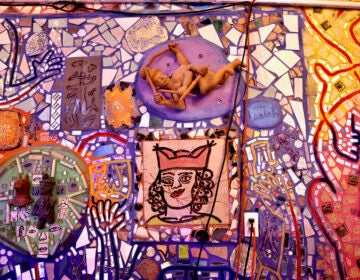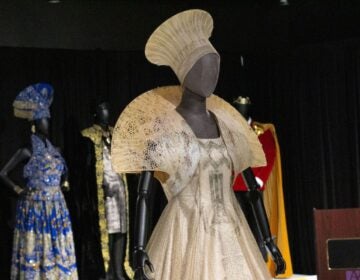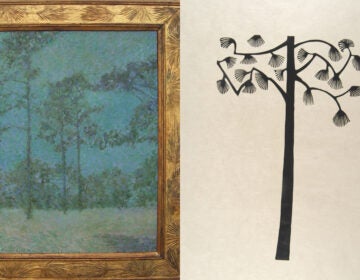Actress CCH Pounder’s art collection comes to the African American Museum
The actress, who has been on television for decades, is also a major collector of contemporary art. She loaned 40 pieces to the AAMP.
From Philly and the Pa. suburbs to South Jersey and Delaware, what would you like WHYY News to cover? Let us know!
Famed television and film actor CCH Pounder and her late husband, Boubacar Koné, amassed a collection of more than 500 contemporary works by African diasporic artists.
A selection of 40 of those works are currently on display at the African American Museum Philadelphia.
Pounder, who is featured in series such as “ER” and “The Shield,” has previously loaned her artwork collection to museums, such as the Charles Wright Museum in Detroit and the Dusable Black History Museum in Chicago.
Last summer, she invited AAMP’s vice president of curatorial services, Dejay Ducket, to her New Orleans home to plan an exhibition in Philadelphia.
“It was a feast for the eyes as we walked through. The biggest problem that I had with it was trying to narrow down what we might bring to Philadelphia,” Ducket said. “To live with artwork on that scale and that beauty — just being in that space was just amazing. You can’t leave uninspired.”
The exhibit “Shared Vision” focuses on figural works, paintings and mixed-media works that center the Black body as a landscape of tension where the artists explore ideas of history, identity and relationships.
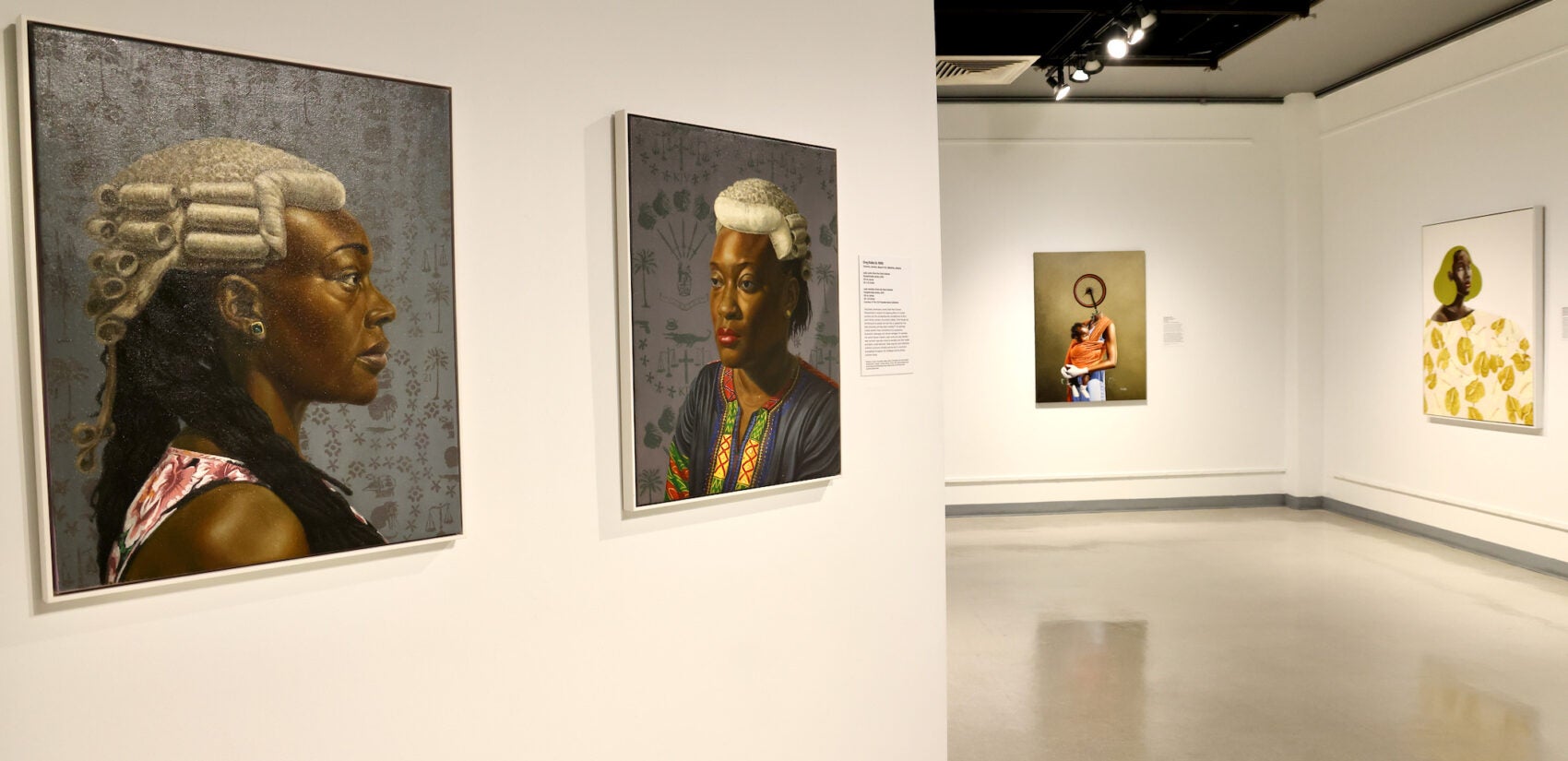
Among the pieces are two of Jamaican artist Greg Bailey’s paintings of a pair of Black women wearing the traditional barrister wigs of British court proceedings. The Jamaican women embody a legal system imposed upon them by British colonizers. The exhibit also features the work of Elizabeth Colomba, a French artist based in New York City’s Harlem neighborhood, who painted “Ceres,” showing a woman reading a book at a table in a scene cluttered with myriad symbols pointing to both African and European heritages.
“Historically, portraits of figurative works both real and imagined signal the power importance or virtue in their subjects,” Ducket said. “When you walk into a museum, particularly a Black museum, and experience portraits like these their power radiates over you and tells the viewer their story.”
Several artists abstracted their figures, such as Luke Agada, a Chicago-based Nigerian artist, who painted a portrait of a woman holding an infant in a photorealistic style. The woman’s head had been replaced by a bicycle wheel.
The artist said his jarring use of surreal imagery is meant to reflect “the ambiguity of identity within the postcolonial framework.”
Pounder said she reads the bicycle wheel more literally.
“For me, it was like the wheels are turning in terms of, ‘How do I create this new life?’” she said. “She’s holding a baby, thinking of all the things that are now required.”
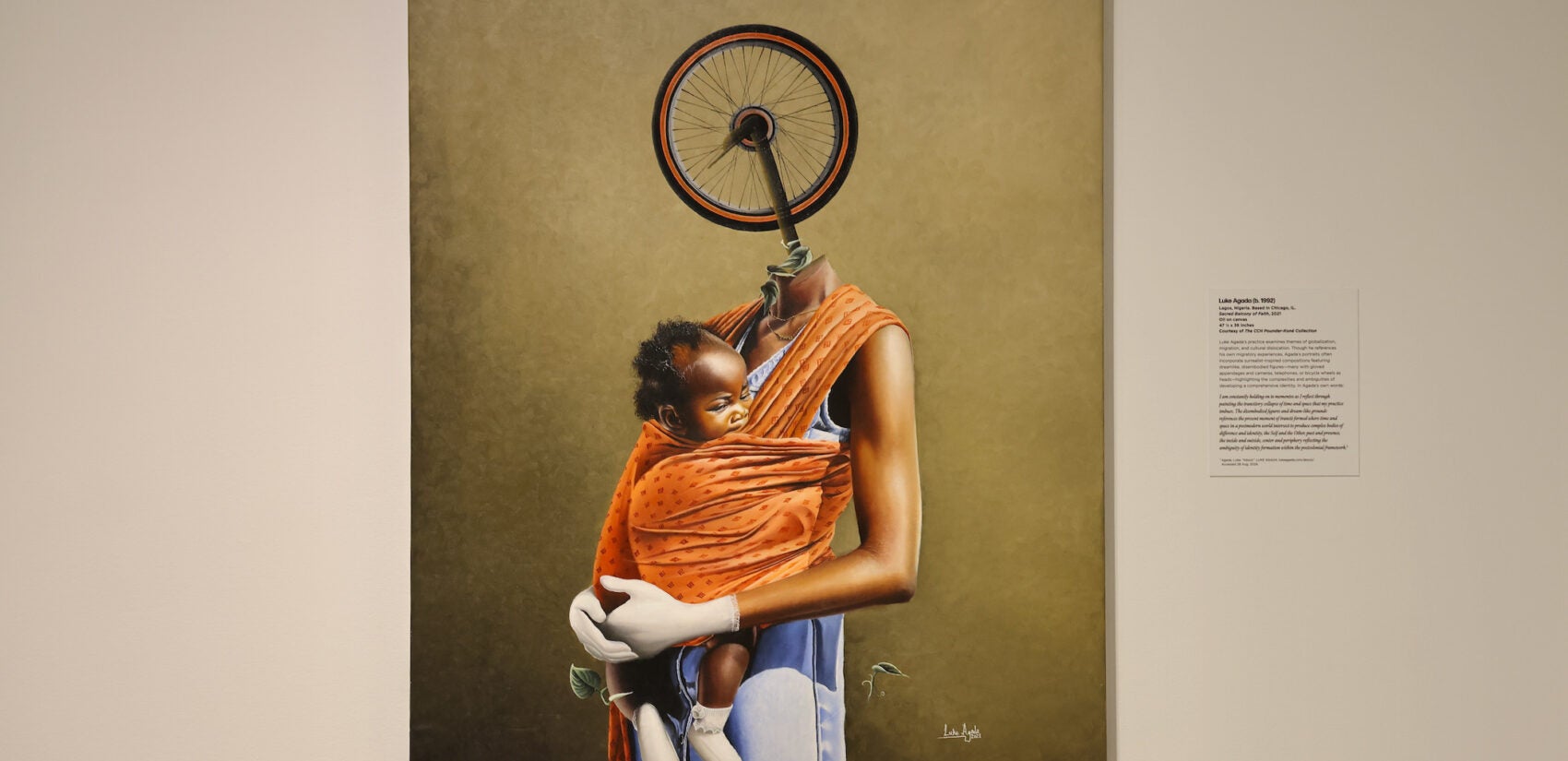
Pounder said one of her favorites pieces that is on display at AAM is by Alex Peter Idoko, a Nigerian artist who uses fire instead of pigment. “Deep Calls to the Deep” is a detailed split-screen image of a young woman mirroring herself, which the artist rendered with charcoal and precise heating tools.
“The detail that he gets out of making the fire as tiny and as pointed as possible,” Pounder marveled at the surface of the piece. “Like a thin paint brush.”
Pounder said her attraction to portraiture can be traced to her youth, growing up in England and taking excursions to points around Europe, where museums rarely featured images of Black people. At the Louvre in Paris, for example, she saw small portraits hung very high, well out of reach for close inspection.
“I remember at the very top of the Louvre, tiny 20-inch-by 30-inch portraits of Arabs and ‘exotics’ were up there, and the Mona Lisa and all the other fabulous people were down below,” Pounder said. “I thought, ‘How do you get those people down here?’ That’s probably where my thinking was when I started.”
She said she has had a lifelong passion for art. When she was a student at Hastings College in South England, she said she had two career choices: to be an artist or an actress. A mentor at the time advised her that acting is a young person’s game, while pursuing art could offer some longevity. She took that advice to heart.
“I really took it to heart and I literally said, ‘Great! For the first half of the century I’ll be an actor, and then for the second half I’ll be an artist,’ she said. “It actually doesn’t really happen like that. Life changes.”
At age 71, Pounder’s acting career is as busy as ever. Since the 1980s she has had a near-constant presence on television, most notably in long-running stints on “ER,” “The Shield,” and “NCIS: New Orleans.”
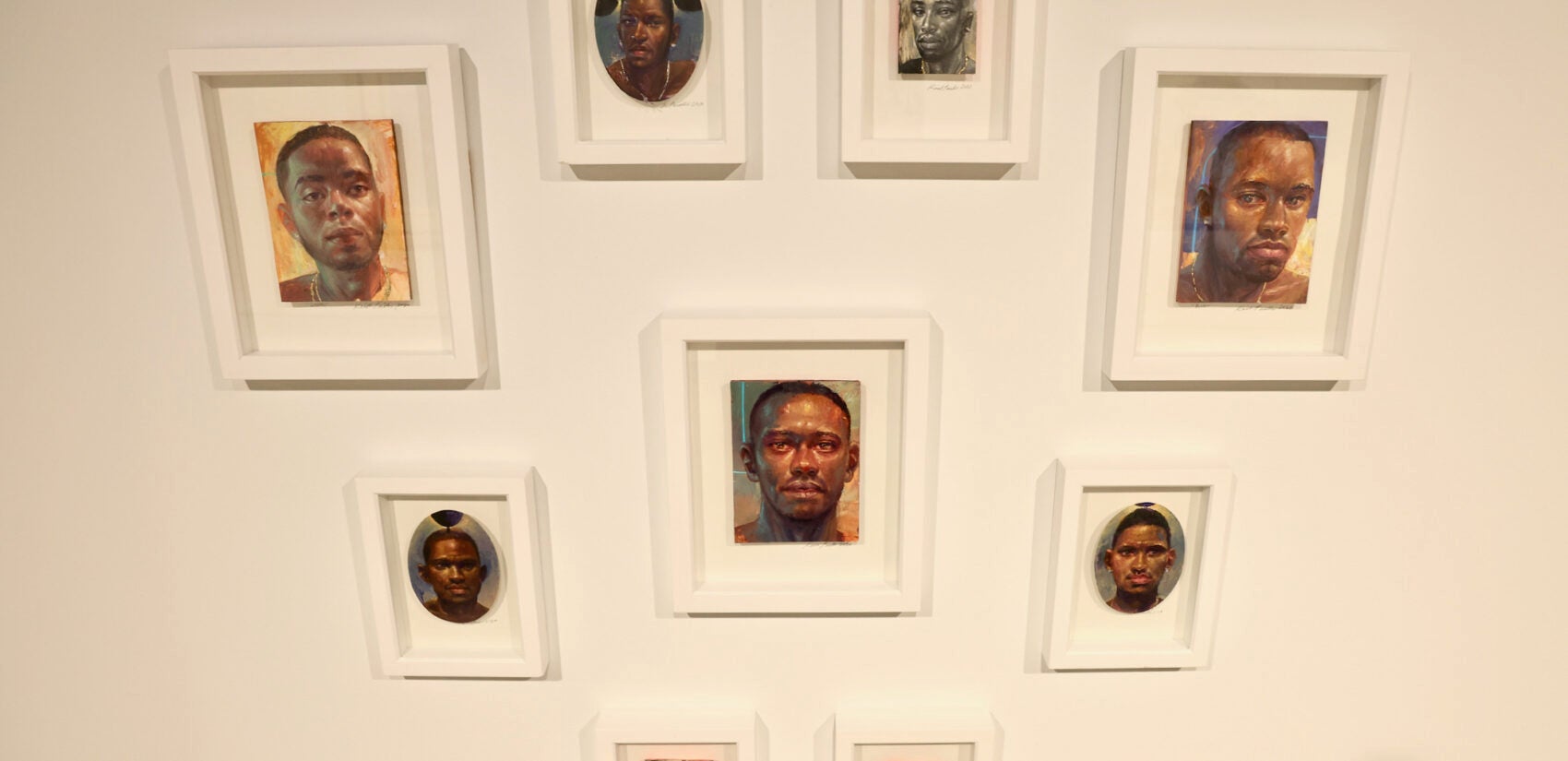
Her art career took a back seat to her acting career until it disappeared altogether. Later, she became an avid appreciator of art and found a partner in her husband and began investing in a private collection.
Pounder said she plans to move away from New Orleans, where she has been based since her involvement with “NCIS New Orleans,” in part for the safety of her art collection, which is vulnerable to the humidity and threat of hurricanes in that area.
Philadelphia might be her next move.
“I am looking at all the empty buildings I see along Market Street,” she teased.
“Shared Vision” will be on view until March 2.

Get daily updates from WHYY News!
WHYY is your source for fact-based, in-depth journalism and information. As a nonprofit organization, we rely on financial support from readers like you. Please give today.



